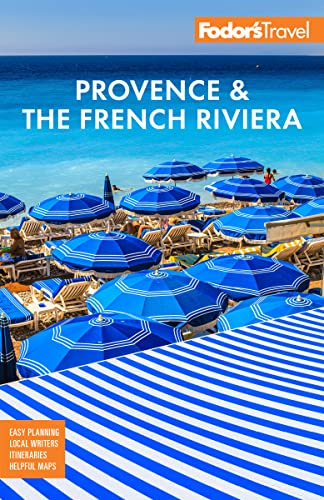With the Alps and pre-Alps playing bodyguard against inland winds, and the sultry Mediterranean warming the sea breezes, the eastern slice of the Côte d'Azur is pampered by a nearly tropical climate that sets it apart from the rest of France's southern coast. This is where the real glamour begins: the dreamland of azure waters and indigo sky; white villas with balustrades edging the blue horizon; evening air perfumed with jasmine and mimosa; palm trees and parasol pines silhouetted against sunsets of apricot and gold.
There has been a constant march to this renowned stretch of Mediterranean coastline, going back to the ancient Greeks, who sailed eastward from Marseilles to market their goods to the indigenes. But most of the earliest inhabitants of this region were fishermen and peasants who grew wheat, olives, and grapes for wine. This was not one of those lush regions of France where the living was easy. There were no palaces or gracious châteaux, only small villages, with fortifications here and there for use when Celts, Vandals, Ostrogoths, Saracens, and pirates from Algeria's Barbary Coast were on the rampage.
It was only in the middle of the 19th century that a troupe of kings and queens (including Victoria and dozens of her relatives), Russian grand dukes seeking to escape St. Petersburg’s harsh climate, princelings from obscure Balkan countries, English milords, and a rabble of nouveau-riche camp followers began making prolonged visits here. They had mansions and gardens built; luxury hotels sprang up in imitation of their palaces back home. Many have left their architectural mark: Moroccan palaces in Menton, a neo-Greek villa in Beaulieu, and a Russian Cathedral in Nice, as appealing to the eye as the works masterminded by Picasso, Matisse, and Chagall, who were attracted to the region thanks to its intoxicating light.
The rich invaders withdrew to the cooler north for the summer months. No person of quality—and above all no lady of quality—would risk getting tanned like those laboring field hands and up to that time, sea bathing was shunned by all, except as a drastic medical remedy. Then, in the 1920s and 1930s, people began to like it hot. The peasantry of the West was now pale factory and office workers, and their new badge of leisure and pleasure became the tan that their aristocratic predecessors had so assiduously avoided. Coco Chanel, the famous couturier, made le bronzage the chicest of fashion "accessories" in 1923 when she accidentally got scorched on a Mediterranean cruise. Toplessness, and even bottomlessness, arrived on the beaches. Meanwhile, more and more hotels, restaurants, nightclubs, and casinos were built.
The Côte remains a demi-paradise. Day-trippers seeking contrast head inland to villages perchés (perched villages) and historic towns—from Mougins, where Picasso spent his last years, to Grasse, with its factories that make perfume from the region's abundant flowers, to the galleries, souvenir shops, and snack stands that crowd the cobblestones of St-Paul-de-Vence. Or you could drive from Cannes to the Italian border in two hours, seeing much of the region courtesy of the swift A8 autoroute and the three parallel Corniches allow you to explore without retracing your steps too often. But like the artists and nobles who paved the way before you, you will likely be seduced to linger.






